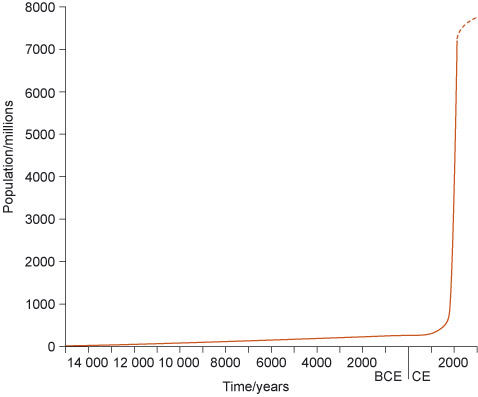Population levelling off
The population of human beings continues to increase because of our ability to increase the efficiency with which we exploit the ecosystems we manage for food and other resources. An ecosystem is a complex set of relationships between the living resources, habitats and residents of an area. It includes plants, trees, animals, fish, birds and micro-organisms, water, soil and people.
Our agriculture allows us to increase the amount of energy available to us as food and the spread of human populations across the Earth demonstrates our ability to migrate from one ecosystem to another in search of new resources. Since the nineteenth century in the industrialised west, improved hygiene and the development of medicine have also led to fewer infants dying, and people living longer.
But population growth and industrialisation increase our demands on the biological and physical resources of the Earth. As the human population nears the limit of what the Earth can provide, the competition for resources (water, food and oil) and the consequences of overcrowding (pollution and disease) will tend to increase.
There is some good news, however. Figures from the United Nations Population Fund have indicated that the rate of the rise in the human population may be levelling off (see the dashed line on Figure 6). One probable reason is that improved healthcare, including reproductive health, has led to people choosing to have smaller families. (In many parts of the world, high mortality rates, including high infant mortality, mean that people have large families to ensure that enough children survive to care for their parents in their old age.) A far less positive reason may be the increasing mortality rates in sub-Saharan Africa and parts of the Indian subcontinent, in large part due to HIV/AIDS.

